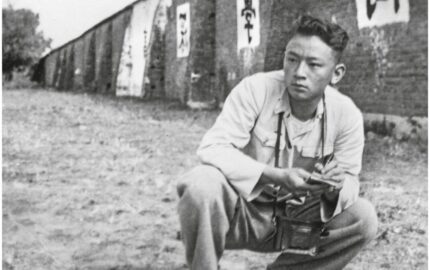
Editorial Cartoons: The Impact and Issues of an Evolving Craft
Many newspapers have decided not to hire a full-time editorial cartoonist, but instead publish the readily available work of syndicated cartoonists. To explore what impact these decisions and other changing circumstances related to editorial cartoons have on journalism, Nieman Reports asked cartoonists, editorial page editors, and close observers of cartooning to write out of their experiences and share their observations about how the long-time role that cartoons have played in journalism and democracy is being affected. – Melissa Ludtke, Editor
 Disappeared: A Journalist Silenced: The Irma Flaquer Story
Disappeared: A Journalist Silenced: The Irma Flaquer StoryJune Carolyn Erlick
Seal Press. 392 Pages. $16.95.In the early cool of an October night in Ciudad de Guatemala 24 years ago, thunder-like noises broke the quiet evening. A playful child explored the sky in search for fireworks, while anonymous bullets murdered his father and his grandmother, Irma Flaquer.
In Guatemala, the 20th century was turbulent, especially during the decades of the 1970’s and 1980’s when it became common for Guatemalans to witness and experience many traumatic events. There were massive and selective murders of people who opposed the regime in power and the disappearance of journalists, union workers, and attorneys also involved with the opposition. It wasn’t uncommon to hear shootings at night or, in this case, to have ignored Irma Flaquer’s cries for help during a time when she wasn’t seeking help for her nation, as she’d done for all her life as a journalist, but for her life.
June Carolyn Erlick masterfully rescues Flaquer’s story, which otherwise would have disappeared into the dust of memory, silence and indifference. She presents us with the portrait of a young journalist who matures in the craft to become the voice of the oppressed in Guatemala. At the time Flaquer does this, many in her country wanted a radical social and political change, but few dared to raise their voices as a way of bringing a stop to the atrocities being committed in the name of democracy. As Erlick writes, “The government had no formal censorship system; censorship came in the form of deaths and disappearances, anonymous phone calls, threatening letters, and the mysterious lists published by the secret anti-Communist army.”
To reconstruct Flaquer’s life was not a simple task. Erlick dug into personal matters, as well as into the country’s recent history, and emerges with not only a realistic portrait of this woman’s passionate life but with a wide perspective of the circumstances of these times in Guatemala’s social, economic and political arenas. In doing so, Erlick’s book goes beyond drawing Flaquer’s own portrait; Erlick’s portrayal of this Latin American journalist’s life and death speaks to what has happened—and continues to happen—under similar circumstances in countries throughout the world and particularly in this region. Though the book features events from the past, it should be read as a story that can offer us much to contemplate about our present.
Erlick’s copious research helps the reader to explore the consequences of U.S. foreign policy and the intricate and entangled paths of those who used ruthless means to remain in power. Her writing speaks to ways in which corrupt political and economic leaders—to protect their interests—constructed mechanisms to create anonymity and impunity for the harmful and sometimes murderous acts they committed. She sketches in some detail the web of alliances between government officials, powerful economic interests and the military apparatus, and writes about the fearful and passive civil society. While a reader might feel as though some sectors of Guatemalan society are ignored and, at times, as though a larger framing of these events is lacking, the facts she presents give readers plenty of information to be able to infer what was happening.
Erlick accomplishes this difficult task by having a clear, omnipresent voice and tone throughout the book. She clearly faced the enormous journalistic challenge in finding a balance between her in-depth research and the discretion she brought to the telling of this story of someone who cannot defend her own version of events and her reaction to them. Erlick does this in a gentle yet uncompromising style. Hard things are said, but respect and prudence are in evidence throughout the book. Erlick takes us deep into Flaquer’s personality to say that “She was a survivor and a creator and a seeker of the meaning of life …” and in doing so, she makes us feel, understand and experience many dimensions of Flaquer’s life.
In the context of this book, the meaning of the term “disappeared” reaches well beyond its common understanding to North American audiences. In Erlick’s words: “To disappear is to vanish completely. It is to evaporate into a form that is no more real nor more tangible than a fear of fireworks or a disembodied body on a forest road.” But the word is also recognized as a form of cruelty and repression that is so sadly common in struggling democracies and totalitarian regimes.
To make somebody disappear is the ultimate form of cruelty. It is also an exercise of power used by those who hold such power to decide when and where someone will disappear. That power radiates in many directions: Disappearance is used to convey the message of who holds the power over life and death and who is able to spread fear into a family and across a community and an entire country. Those who shared any connection to the “disappeared”—whether they be colleagues, neighbors, relatives or countrymen— wonder, in silence, could I be next? That question is, of course, the triumph of their oppressors; through such atrocities, these dark deeds reach deep into the kingdoms of fear and death.
This book is highly recommended for anyone interested in recent Latin American history. Not only is it an excellent profile of a courageous woman and a solid analysis of the great challenges she encountered—and that contemporary journalists still encounter—but more
broadly the book speaks to the crucial importance journalism has in shaping the future of any nation.
Mauricio Lloreda, a 2004 Nieman Fellow, is an op-ed columnist for El Tiempo in Colombia and is currently studying at the John F. Kennedy School of Government at Harvard University.


